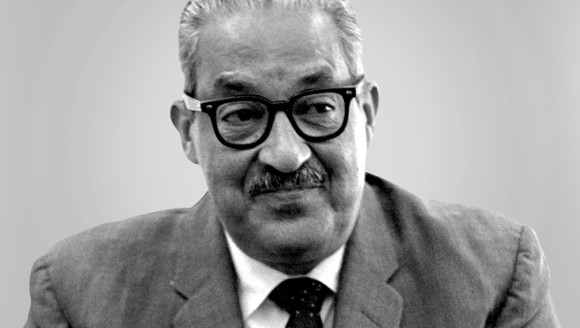
Thurgood Marshall was the first African American Associate Justice of the United States Supreme Court. Marshall was also famous for his historic victory on the ‘Brown v. Board of Education of Topeka’ Case, which ended the racial segregation of public schools.
Thurgood Marshall, born ‘Thoroughgood Marshall’, was born on July 2, 1908 in Baltimore, Maryland. His grandfather and great-grandfather were both slaves. His father however, was a railroad porter, while his mother was a teacher.
Marshall graduated from Frederick Douglas High School in Baltimore in 1925, after which he was accepted by Lincoln University. Marshall, aside from studying law, was an active member of the Lincoln debating team. Marshall also took part in a debate that centered on the racial integration of the African-American professors of the University, a motion which he opposed. Marshall graduated from Lincoln in 1929 with a Bachelors of Arts in Humanities. He subsequently studied law at the Howard University School of Law, where he graduated at the top of his class in 1933.
After graduation, Marshall joined the National Association for the Advancement of Colored People (NAACP) in 1936; an organization with which he would be affiliated for twenty five years. In 1934, Marshall represented the organization in the law school discrimination suit, ‘Murray v. Pearson’, against the University of Maryland, which Marshall won for Murray. Marshall’s victory was centered on the ‘separate but equal’ doctrine of the Fourteenth Amendment, which Marshall used to his advantage.
In 1940, Marshall won an extremely important United States Supreme Court Case that dealt with the authenticity of a confession under ‘due pressure’. The case, named ‘Florida v. Chambers’ was one of Marshall’s many successful victories before the Supreme Court. Marshall then founded the NAACP Legal Defense and Educational Fund, through which he argued many civil rights cases before the Supreme Court, the majority of which Marshall won. These included many cases which concerned desegregation and the ‘separate but equal’ doctrine of education. Soon, Marshall would argue one of the most historic cases in history before the Supreme Court; a case that would challenge the ‘separate but equal’ doctrine itself. The case, publicly known as ‘Brown v. Board of Education’, argued that public education could be separate but never truly ‘equal’. The case was won by Marshall, who was hailed as a Heroic Civil Rights Activist. All in all, out of the thirty two cases that Marshall argued before the Supreme Court, Marshall had lost only three.
Marshall was promptly appointed to the United States Court of Appeals for the Second Circuit by President John F. Kennedy in 1961, and in 1965, Marshall was appointed as the United States Solicitor General, a post with which he won fourteen out of nineteen cases for the government.
Upon the retirement of Justice Tom C. Clark from the Supreme Court, Thurgood Marshall was confirmed as an Associate Justice of the United States Supreme Court by the United States Senate, following a nomination by President Johnson. Marshall held that position for a period of twenty four years, and he quickly formulated a reputation of strongly supporting the constitutional protection of civil and individual rights.
Marshall retired from the Supreme Court in 1991, two years before his death. Thurgood Marshall died of heart failure on January 24, 1993.
